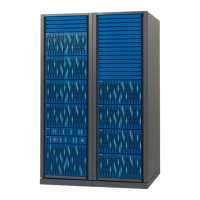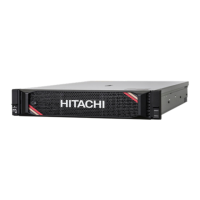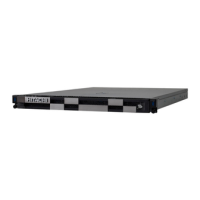(1) Defining to control UR MxN
CCI supports a way to specify consistency Q-Marker to the specified group by
adding "HORCM_CTQM" as a keyword in horcm.conf (see example below).
HORCM CTQM
#groupinterval (10ms)mode(optional
oradb300
where
• group is to be allowed as a group across multiple storage systems.
• interval is the interval for the CTQ-Marker, recommended as a few
second.
• mode is the run mode for the CTQ-Marker (timestamp). The default run
mode is freeze/run. This does not normally need to be specified. If "run"
is specified, then the timestamp is issued without freeze.
(2) Specifying different JID into consistency group
In order to support the MxN configuration, it is necessary to specify a
different journal ID (JID) into a consistency group corresponding to a CCI
group. Thus CCI adds an option to specify Journal ID in horcm.conf.
HORCM_LDEV
#dev_group dev_name Serial# CU:LDEV(LDEV#) MU#
oradb dev1 30095:1 02:40
oradb dev2 30095:1 02:41
oradb dev3 30095:2 02:42
oradb dev4 30095:2 02:43
Note: The number at the end of the serial number (for example, :1 or :2)
specifies the Journal ID.
If JID (Journal ID) is specified on horcm.conf as mentioned above, then the
paircreate command need not specify Journal ID (-jp <jid> -js <jid>)
option.
If JID (Journal ID) is not specified on horcm.conf, then Journal ID (-jp <jid> -
js <jid>) option of the paircreate command is used.
Command specifications
CCI does not change the command options for supporting Universal
Replicator MxN Open. However the output of the command is added so that
the command can display the consistency group and Q-Marker for each
storage system, because the consistency group and Q-Marker are managed
on each storage system.
pairdisplay command
The output of pairdisplay -v ctg and pairdisplay -v jnl[t] are
supported so that the option can display consistency group information for
each storage system. Following is an example for UR 2x2:
6-46
Data replication operations with CCI
Command Control Interface User and Reference Guide

